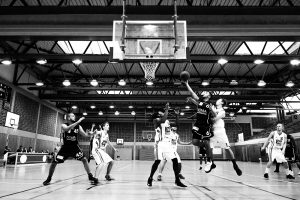Piste skiing is a type of skiing that takes place on snow-covered slopes. These are typically found at ski resorts and offer more of a challenge than skiers looking for easier terrain, such as moguls or groomers.
Piste skiers tend to fall into two categories: those who enjoy speed and aggressive turns and the ones who prefer carving long arcs across the mountain. Any novice piste skier needs to know what they’re getting themselves into before heading out onto the slopes, so here’s a short guide to understanding this style of skiing better.
What Is Piste Skiing?
Piste skiing is skiing on groomed trails. These are ski runs prepared by snow grooming machines before the first descent. The starts and landings of these runs are designed for optimum safety conditions for beginners, intermediates, and more advanced skiers (people who like to ski fast).
There are almost always great pistes in all resorts, whether they’re family-friendly or tougher. You’ll find more extreme slopes at freeride areas, where there are no lifts (you need to hike up), or at off-piste areas (where you need special equipment to access them). But otherwise, most major mountains offer sites that can be easily accessed from the lifts and can be enjoyed by all.
What Kind of Piste Skiing Is There?
You’ll find that every mountain has its own character, and different trails indicate good, better, or best conditions:
1. Green
These are usually beginner trails where you can easily adjust your speed to match novices. It’s ideal for starting out with children and improving your technique. If you’re a regular skier, this would also be a good place to ski when it’s busy because you won’t have to queue at the lift.
2. Blue
This requires more demanding runs, so you must know how to handle moderate gradients and perhaps some flat sections, too, if they’re steeper than usual. At least one blue run per resort should be a must for experts.
3. Red
Red runs are often steep with tight turns and require more advanced technique, so you should have good visibility on the piste ahead of you before skiing down. You can easily spot red runs from a distance because they cut through the snow in a zigzag pattern.
They’re also signposted as “more difficult” trails. If you don’t know how to read a piste map, avoid this sort of trail until you’ve undergone ski instructor training. If there’s an imbalance between your weight or speed and the angle of the slope, you could find yourself in danger.
4. Black
These are only for skiers who really know what they’re doing! Very steep slopes (specially marked) of which you need to know how to handle the gradient and risk.
What to Bring in Piste Skiing
Safety is the priority when you’re doing piste skiing. With this in mind, you should come here prepared with the right gear. Here’s what you need:
1. Ski Equipment

If you’re on a tight budget, you can rent the skiboard from the resort. The team can suggest an ideal option considering they know the areas well.
However, if you’re serious about making skiing a hobby or even a sport, now is the best time to invest in the right equipment. This way, you can train with what’s yours.
Your choice of ski depends on many factors. One of these is weight. Because women have different weight profiles and build, the ladies should consider getting a pair designed for them. Good options on the market today include Blizzard Skis Black Pearl, which is made from carbon.
It is durable, but it doesn’t add more weight. It also makes your ski more responsive, which is incredibly important as you take the downhill slope.
2. Ski Goggles
It’s actually one of the most important ski accessories! A pair blocks out snow glare and protects your eyes from any pebbles kicked up by other skiers. It’s particularly common for those who wear contact lenses.
3. Ski Poles
These are essential if you want speed and good control over your speed. Choosing the right pole depends on many factors depending on your size, weight, and experience level.
5. Avalanche Beacon and Probe
If you plan on going off-piste or approaching open areas where there are avalanches (usually marked as such), you’ll need an avalanche beacon to help rescuers find you if needed. This is one of the most important pieces of equipment you can buy and learn how to use before skiing off-piste as it may save your life.
If avalanches are a possibility where you’re going, always carry a probe with you. They don’t weigh much, and rescue teams will be extremely grateful. Plus, they could even be used by other skiers who need to perform first aid for someone buried in the snow.
Piste skiing is amazing if you’re looking for a challenge or want to take this hobby to another level. However, the adrenaline rush should never precede safety.







